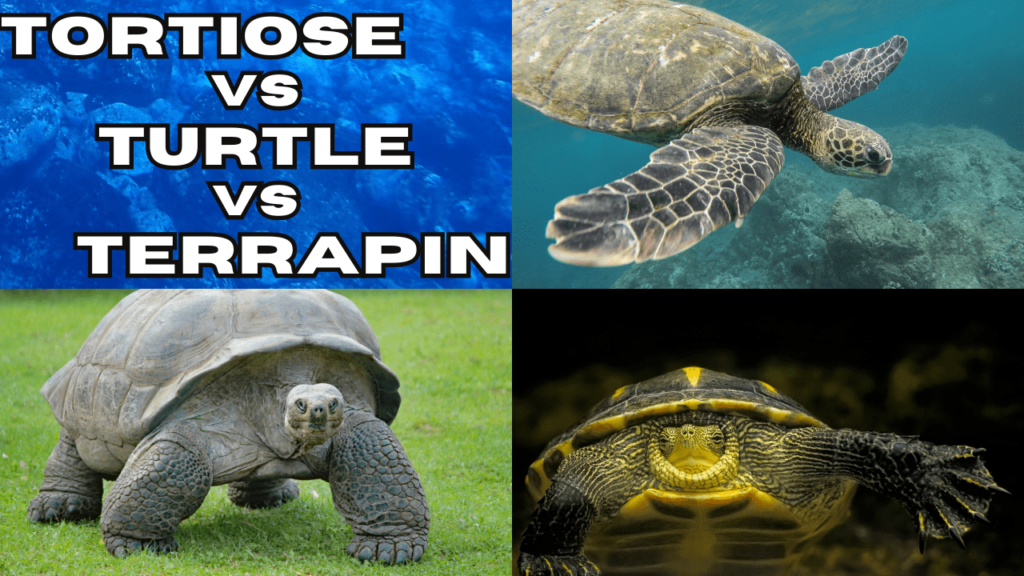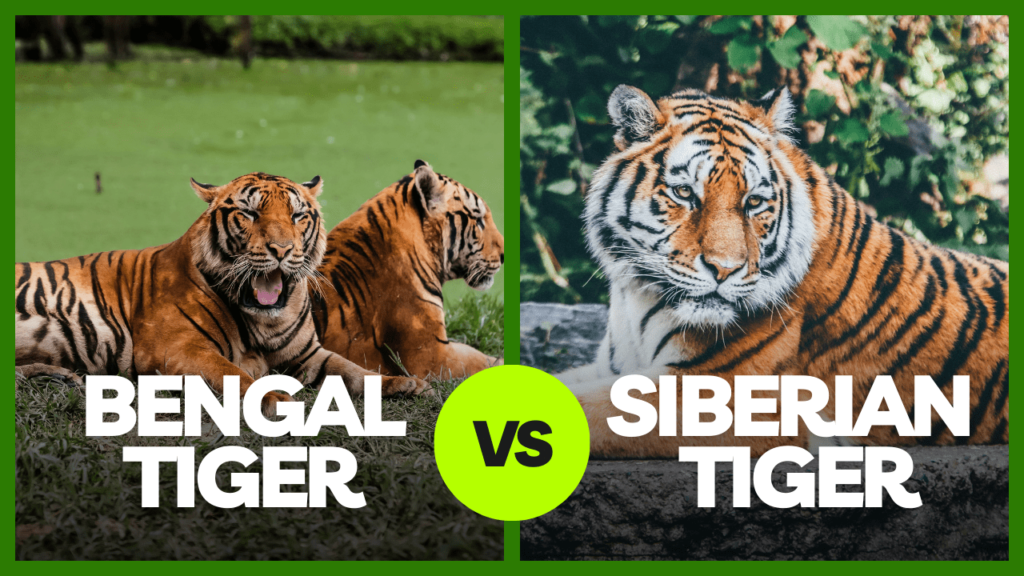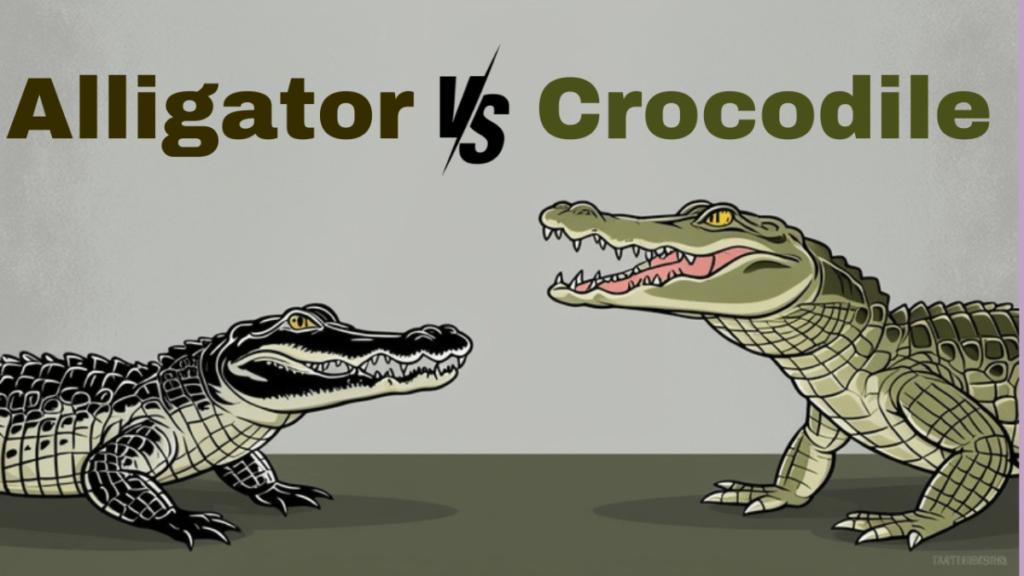When it comes to shelled reptiles, many people use the terms tortoise, turtle, and terrapin interchangeably, leading to a great deal of confusion. While these creatures share some similarities, they each have distinct characteristics that set them apart. Understanding these differences is not just a matter of semantics; it can significantly impact our appreciation of their unique habitats and behaviors.
So, what exactly is the difference between a Turtle Vs Tortoise Vs Terrapin? This question often arises among wildlife enthusiasts and casual observers alike. By exploring their specific traits, environments, and lifestyles, we can gain a clearer picture of these fascinating reptiles and their roles in the natural world.
We will also help you differentiate between a tortoise, a turtle, and a terrapin. Each group has evolved distinct features suited to their particular way of life—whether they dwell on land, in water, or a mix of both. This understanding not only enhances our knowledge but also informs conservation efforts and promotes better care in captivity.
Turtle Vs Tortoise Vs Terrapin? How to Identify (10 Differences)
Understanding the difference between turtle vs tortoise vs terrapin involves recognizing specific features and behaviors that distinguish these reptiles. Here’s a quick guide to help you tell them apart:
1. Habitat:
- Tortoise: Lives exclusively on land. Found in deserts, grasslands, or forests.
- Turtle: Primarily lives in water (oceans, rivers, lakes). Only comes to land to bask or lay eggs.
- Terrapin: Semi-aquatic; found in both water and land environments like marshes, ponds, and swamps.
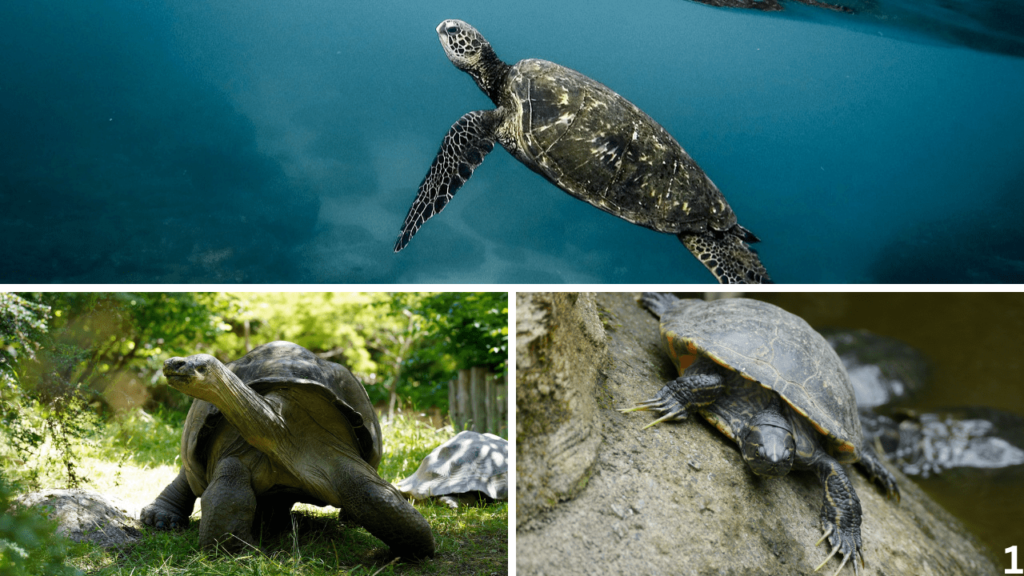
2. Shell Shape:
- Tortoise: Has a dome-shaped, heavy shell. Designed for protection on land.
- Turtle: Features a flat, streamlined shell for efficient swimming.
- Terrapin: The Shell is slightly domed but also more streamlined compared to a tortoise, allowing swimming and walking.
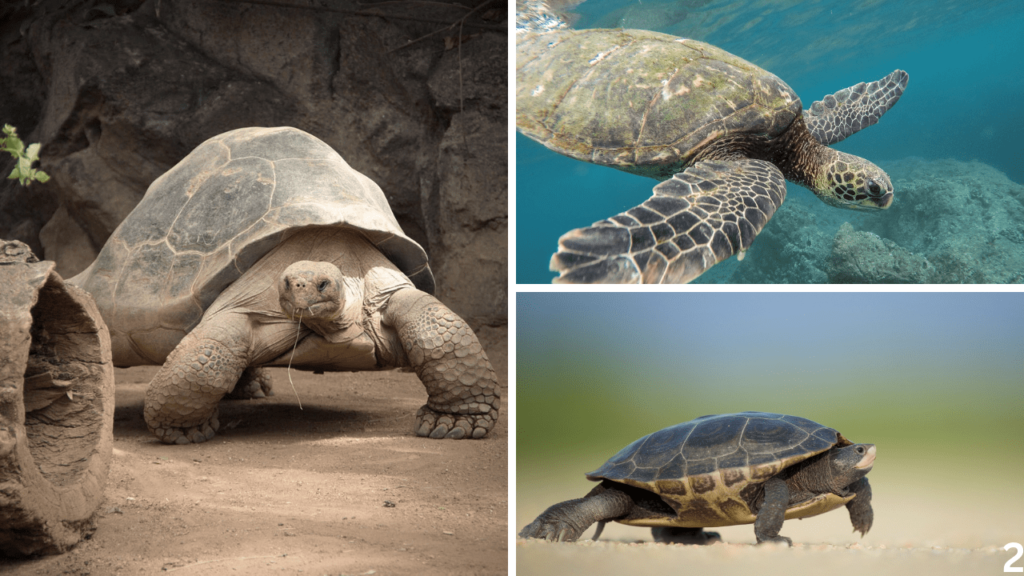
3. Feet and Limbs
- Tortoise: Has stumpy, elephant-like feet designed for walking on land. They have strong, thick claws used for digging burrows in the ground. Their claws are more pronounced for terrestrial life.
- Turtle: Equipped with webbed feet or flippers, with longer, thinner claws suited for swimming.
- Terrapin: Terrapins have webbed feet with sharp claws, useful for both swimming and climbing onto rocks or logs.
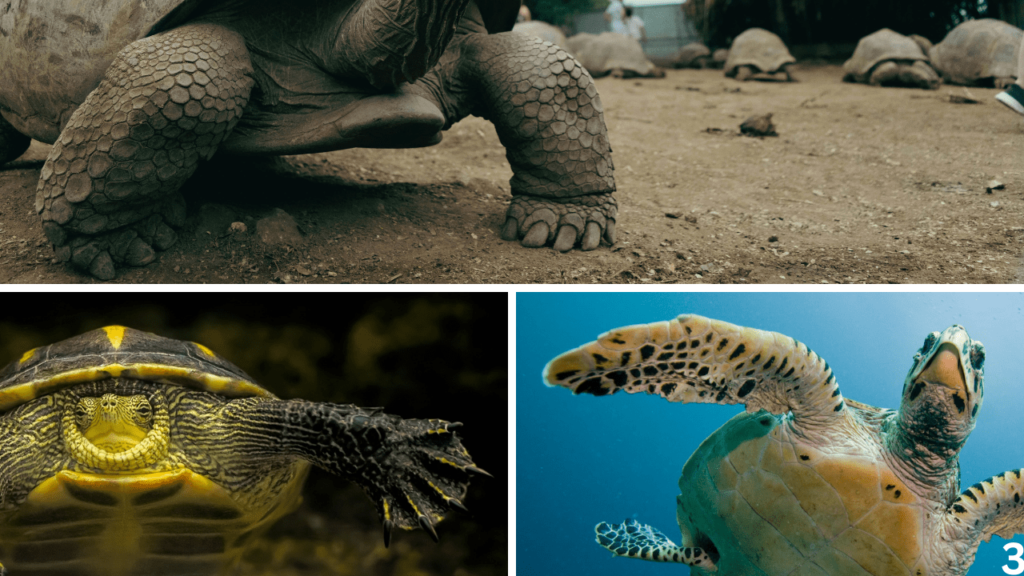
4. Tail Size
- Tortoise: Typically, a short, sturdy tail.
- Turtle: Longer, thinner tail compared to a tortoise.
- Terrapin: Similar to a turtle, with a medium-length tail.

5. Neck Length
- Tortoise: While typically known for having shorter, thick necks relative to turtles, tortoises can extend their necks significantly when reaching for food or surveying their surroundings. However, their necks are adapted for retracting into their shells for defense.
- Turtle: Turtles generally have longer, more flexible necks to help them navigate aquatic environments. This helps them extend their head out of the water for air or to catch prey.
- Terrapin: Terrapins have medium to long necks, allowing them to function well in both aquatic and terrestrial environments.

6. Eyes
- Tortoise: Tortoises typically have eyes positioned more to the sides, helping them have a wider field of vision on land.
- Turtle: Turtles’ eyes are also on the sides but are more adapted to seeing underwater, with some species having excellent underwater vision.
- Terrapin: Similar to turtles, terrapins have eyes suited for both land and water, but with adaptation for spotting prey in water.
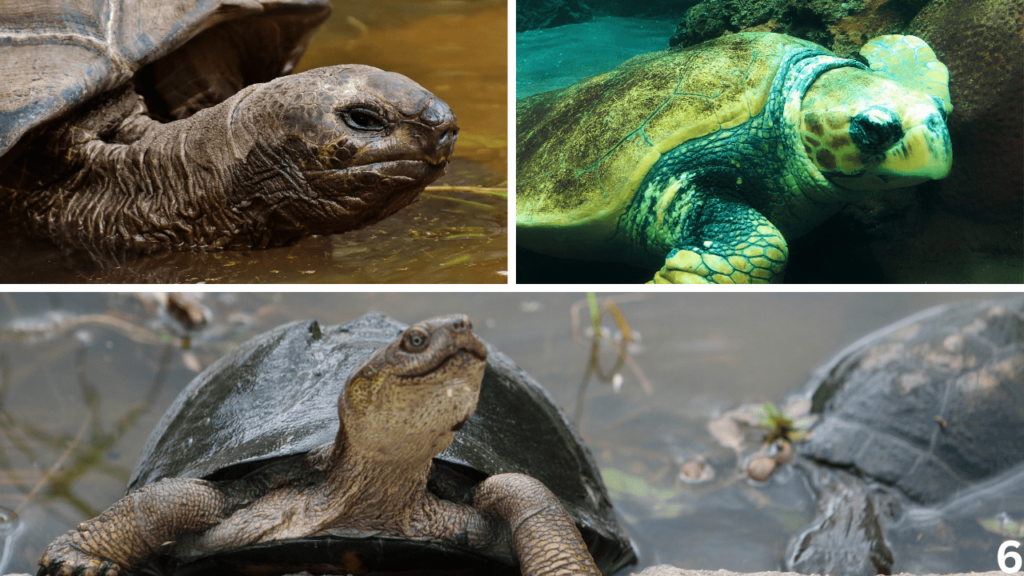
7. Mouth (Teeth and Jaw)
- Tortoise: Tortoises do not have teeth. They have strong, beak-like mouths designed for crushing and grinding tough plant material.
- Turtle: Like tortoises, turtles lack teeth but have sharp, beak-like mouths to cut food like jellyfish, fish, or vegetation.
- Terrapin: Terrapins also have no teeth, but their jaws are strong and sharp for snapping up prey like fish and crustaceans.
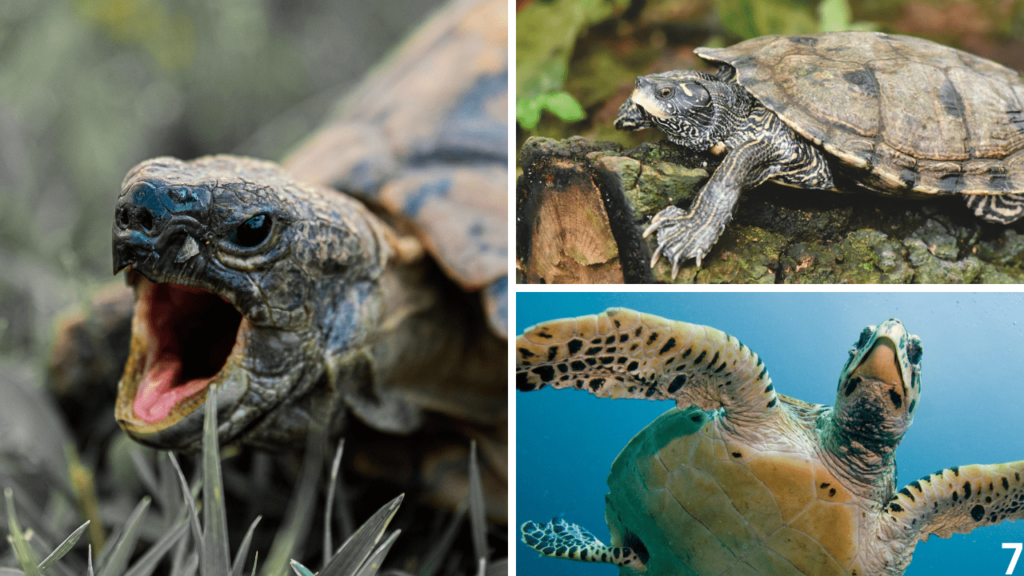
8. Beak Shape
- Tortoise: Has a more rounded beak for grinding plants.
- Turtle: Turtles have a sharper beak designed for cutting through a variety of foods.
- Terrapin: Similar to turtles, but often with a more robust beak for tougher aquatic prey.
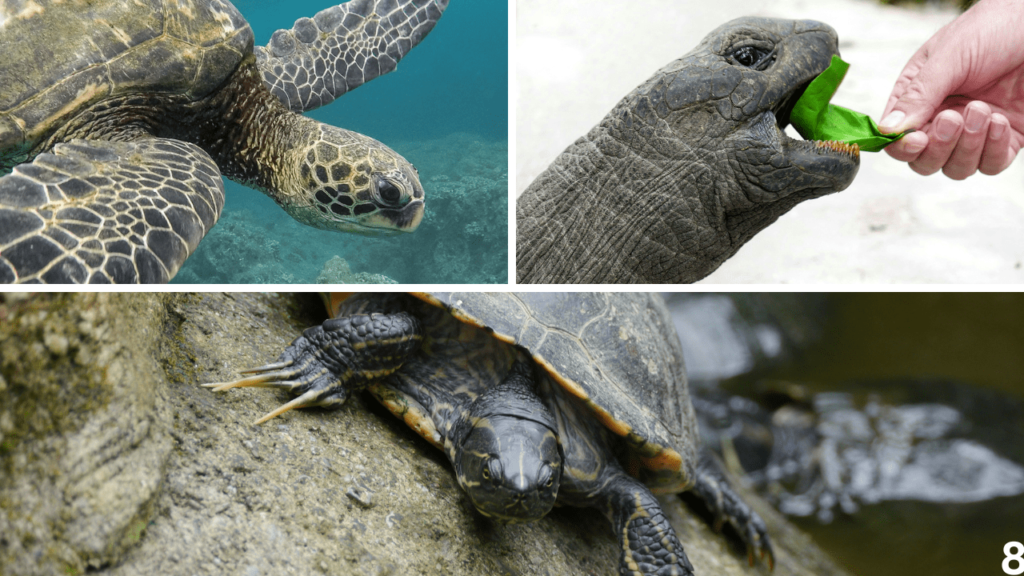
9. Body Size and Weight:
- Tortoise: Tortoises are generally larger and bulkier than other species in the Testudines family. They can range from a few kilograms to over 400 kg (880 lbs), like the Galápagos tortoise. The average tortoise can grow between 25 cm to over 1.2 meters (10 in to 4 ft) in length.
- Turtle: Turtles, especially sea turtles, are generally more streamlined for swimming. Some species like sea turtles are large, but freshwater turtles tend to be smaller. Sea turtles can weigh up to 700 kg (1,500 lbs), like the Leatherback turtle, while freshwater species tend to be much smaller, weighing between 1 to 10 kg (2 to 22 lbs). Sea turtles can grow up to 1.8 meters (6 ft), while smaller species are typically 10 to 30 cm (4 to 12 in) long.
- Terrapin: Terrapins are smaller and lighter, usually than both tortoises and sea turtles. They generally weigh between 1 to 5 kg (2 to 11 lbs). Most terrapins grow between 12 to 30 cm (5 to 12 in) in length.

10. Diet:
- Tortoise: Tortoises are primarily herbivores, feeding on grasses, leaves, fruits, and vegetables. Their diet consists mostly of plant material, which they grind and crush with their strong beak-like mouths. Some tortoise species may occasionally consume small insects, but plants make up the bulk of their nutrition.
- Turtle: Turtles are omnivores, meaning their diet consists of both plant and animal matter. Depending on the species, turtles may eat aquatic vegetation, algae, small fish, insects, jellyfish, or crustaceans. Sea turtles, for example, might consume jellyfish, while freshwater turtles eat a combination of aquatic plants and small animals.
- Terrapin: Terrapins are also omnivores and have a more varied diet compared to tortoises. They consume a mix of plants, fish, insects, and crustaceans. Their strong jaws allow them to crack open the shells of snails, mollusks, and other hard-shelled aquatic creatures, making them well-adapted to their semi-aquatic habitats.
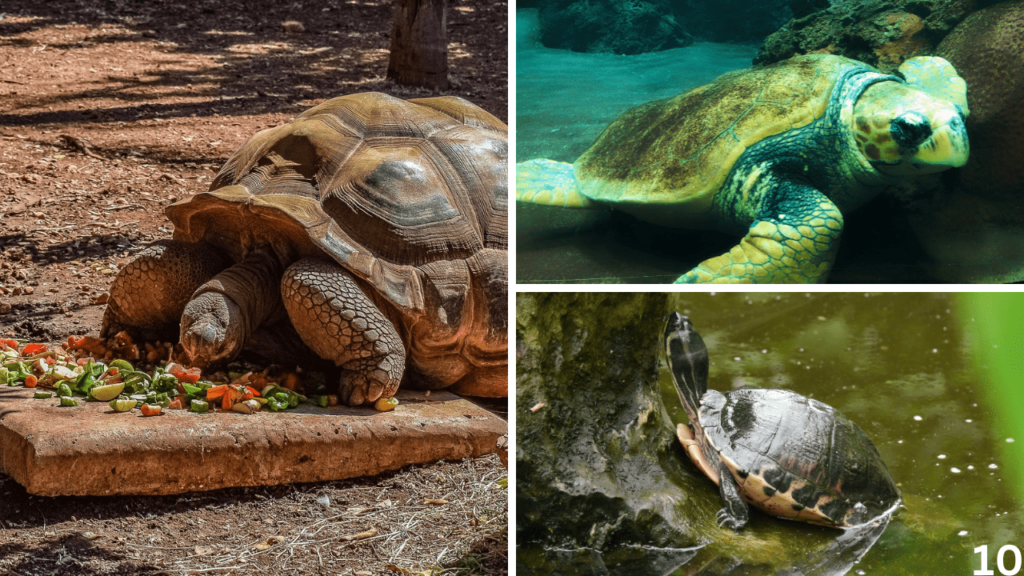
difference between turtle and tortoise and terrapin (TABLE):
| Attribute | Tortoise | Turtle | Terrapin |
|---|---|---|---|
| Shell Shape | High, domed, robust | Flat, streamlined | Intermediate, slightly domed but more streamlined than tortoises |
| Shell Structure | Thick, strong, designed for land | Smooth, streamlined for swimming | Combination of features for both land and water |
| Limb Characteristics | Sturdy, elephant-like legs with claws | Webbed feet or flippers | Webbed feet with some claws, adapted for swimming and walking |
| Feet and Limbs | Stumpy, elephant-like feet designed for walking on land | Webbed feet or flippers for swimming | Webbed feet for both swimming and walking |
| Tail Size | Short, sturdy tail | Longer, thinner tail compared to tortoises | Medium-length tail, similar to turtles |
| Neck Length | Short, stubby neck designed for pulling head inside the shell for protection | Longer neck for searching for food in water while the body remains submerged | Medium to long neck, useful in aquatic environments |
| Nails and Claws | Strong, thick claws for digging burrows | Longer, thinner claws for swimming | Sharp claws for swimming and climbing onto rocks or logs |
| Eyes | Positioned more to the sides, providing a wide field of vision on land | Adapted for underwater vision, excellent for spotting prey | Adapted for both land and water vision, useful for spotting prey in aquatic environments |
| Mouth (Beak) | No teeth, strong beak-like mouth for crushing and grinding tough plants | No teeth, sharp beak for cutting food like jellyfish, fish, and vegetation | Strong beak and jaws for snapping up prey like fish and crustaceans |
| Habitat | Lives exclusively on land (deserts, grasslands, forests) | Primarily aquatic (oceans, rivers, lakes); comes to land to bask or lay eggs | Semi-aquatic; found in both water and land environments like marshes, ponds, and swamps |
| Behavior | Primarily land-dwelling, minimal water exposure | Mostly aquatic; comes on land to bask or lay eggs | Alternates between land and water |
| Diet | Herbivorous (grasses, leaves, fruits) | Omnivorous (plants, fish, insects, jellyfish) | Omnivorous (plants, fish, insects, crustaceans) |
| Body Size | Larger and bulkier, ranging from 25 cm to over 1.2 meters (10 in to 4 ft) | Varies; sea turtles can grow up to 1.8 meters (6 ft), smaller freshwater species between 10-30 cm (4-12 in) | Smaller; most terrapins grow between 12 to 30 cm (5-12 in) |
| Average Weight | Ranges from a few kilograms to over 400 kg (880 lbs) for large species like the Galápagos tortoise | Sea turtles can weigh up to 700 kg (1,500 lbs); freshwater species are smaller (1-10 kg) | Lighter, generally between 1 to 5 kg (2 to 11 lbs) |
| Quick Example | Galápagos Tortoise: Large, domed shell, thick legs, land-dwelling | Leatherback Turtle: Flat, streamlined shell, flippers, marine habitat | Diamondback Terrapin: Intermediate shell, webbed feet, brackish coastal waters |
Terrapin Vs Tortoise Vs Turtle: Characteristics and Habitats
Tortoise:
When exploring the difference between turtle and tortoise, it’s important to dive into the specific characteristics and habitats of tortoises. These land-dwelling reptiles are unique in their adaptations and behaviors.
| Common Name | Tortoise |
| Scientific Name | Testudines (Note: Testudines is the order, specific species vary) |
| Family Name | Various (e.g., Testudinidae for many land tortoises) |
| Type | Reptile |
| Size | Head and body length: 20-90 cm (8-35 inches); Tail length: 1-2 cm (0.4-0.8 inches) |
| Weight | 2-250 kg (4.4-550 lbs), depending on species |
| Size Relative to a 6-Ft Human | Varies from small (less than 1 foot) to large (comparable to human height) |
| Diet | Herbivorous; feeds on grasses, leaves, and fruits |
| Average Lifespan in the Wild | 50-100 years, depending on species |
| Habitat | Dry, terrestrial environments such as deserts, grasslands, and savannas |
| Group Name | A group of tortoises is simply called a “herd” or “team” |
| Found In | Africa, Asia, the Americas (varies by species) |
| Conservation Status | Ranges from Least Concern to Critically Endangered, depending on species |
Habitat
Tortoises are primarily land-based creatures that thrive in a variety of terrestrial environments. They are commonly found in arid deserts, dry grasslands, and savannas. Their habitats are characterized by sparse vegetation and significant temperature fluctuations. Unlike their aquatic counterparts, tortoises have adapted to survive in these often harsh conditions, relying on their ability to conserve water and withstand extreme temperatures.
Pinta Island Tortoise are now Extinct. Check out the list of 20 Notable Extinct Animals
Physical Traits
One of the most distinctive features of tortoises is their sturdy, dome-shaped shell. This shell is designed to provide excellent protection against predators and environmental hazards. The dome shape helps to deflect attacks and shelter the tortoise from the elements. In addition to their robust shells, tortoises have strong, elephant-like legs. These legs are adapted for walking long distances across rugged terrain and are well-suited to support their heavy bodies. Their feet are generally more stumpy and less webbed compared to turtles, reflecting their terrestrial lifestyle.
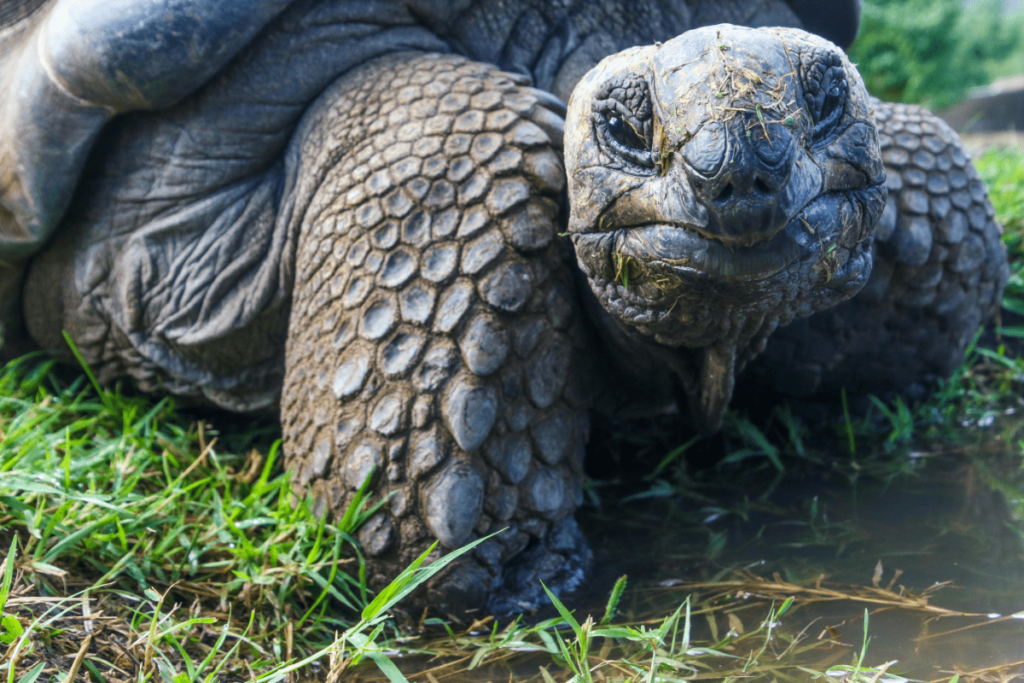
Lifespan and Diet
The lifespan of a tortoise varies by species, but many can live for several decades, with some reaching over 50 years. The Galápagos tortoise, for instance, can live up to 100 years or more, making it one of the longest-lived land animals.
In terms of diet, tortoises are primarily herbivores. They feed on a variety of plant materials, including grasses, leaves, and fruits. Their diet is adapted to their environment, often consisting of high-fiber and low-water content plants that help them maintain hydration. This herbivorous diet is supported by their specialized digestive systems, which are designed to break down fibrous plant matter efficiently.
Understanding these characteristics highlights the significant difference between turtle and tortoise, showcasing how tortoises have evolved to thrive in their land-based habitats. Their unique physical traits and lifestyle adaptations enable them to survive and flourish in environments where other reptiles might struggle.
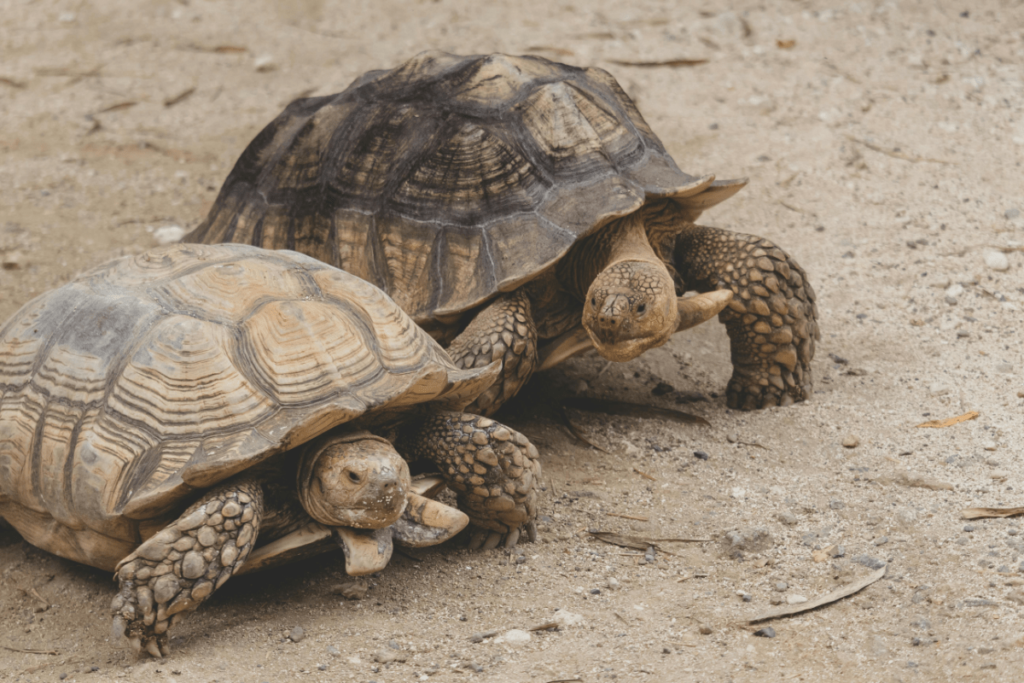
Turtle:
When examining the difference between tortoise and turtle, one of the key aspects to consider is the turtle’s aquatic nature. Turtles are specially adapted to life in or around water, which sets them apart from their land-dwelling relatives.
| Common Name | Turtle |
| Scientific Name | Testudines (Note: Testudines is the order, specific species vary) |
| Family Name | Various (e.g., Cheloniidae for sea turtles, Emydidae for freshwater turtles) |
| Type | Reptile |
| Size | Head and body length: 20-200 cm (8-79 inches); Tail length: 1-20 cm (0.4-8 inches) |
| Weight | 0.5-700 kg (1-1543 lbs), depending on species |
| Size Relative to a 6-Ft Human | Ranges from small (less than 1 foot) to large (more than human height) |
| Diet | Omnivorous; feeds on aquatic plants, fish, insects, jellyfish |
| Average Lifespan in the Wild | 20-80 years, depending on species |
| Habitat | Aquatic environments such as oceans, rivers, lakes, and ponds |
| Group Name | A group of turtles is called a “bale” or “dole” (for sea turtles) |
| Found In | Worldwide, including tropical, subtropical, and temperate regions |
| Conservation Status | Ranges from Least Concern to Critically Endangered, depending on species |
Aquatic Nature
Turtles are primarily aquatic or semi-aquatic reptiles. Unlike tortoises, which are adapted for land, turtles thrive in a variety of water environments, including oceans, rivers, and ponds. Their lifestyle is closely tied to their aquatic habitats, which influence their physical traits and behaviors.
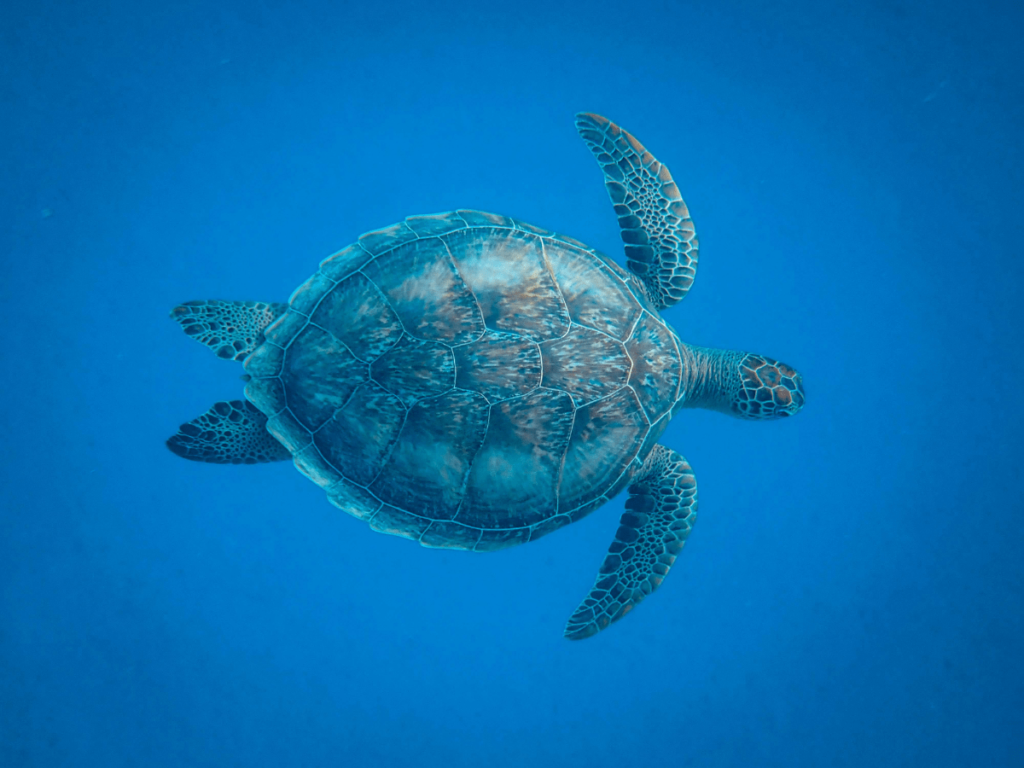
Physical Traits
One of the most distinguishing features of turtles is their flat, streamlined shell. This shell is designed to aid in swimming by reducing drag and improving buoyancy. The streamlined shape allows turtles to glide through water with ease. Additionally, turtles have webbed feet or flippers, which enhance their swimming ability. These adaptations are crucial for their survival in aquatic environments, as they enable efficient movement and help them navigate through their watery habitats.
Diet and Lifestyle
The diet of turtles varies depending on their species and habitat. Many turtles are omnivores, consuming a mix of aquatic plants, small fish, insects, and even jellyfish. Their diet is often influenced by the availability of food in their aquatic environment. For instance, sea turtles might feed on jellyfish and algae, while freshwater turtles may consume insects and aquatic vegetation.
In terms of lifestyle, turtles are often more social and migratory compared to tortoises. They may travel long distances between feeding and nesting sites. Their behavior is closely linked to their need to find suitable environments for feeding, mating, and nesting.
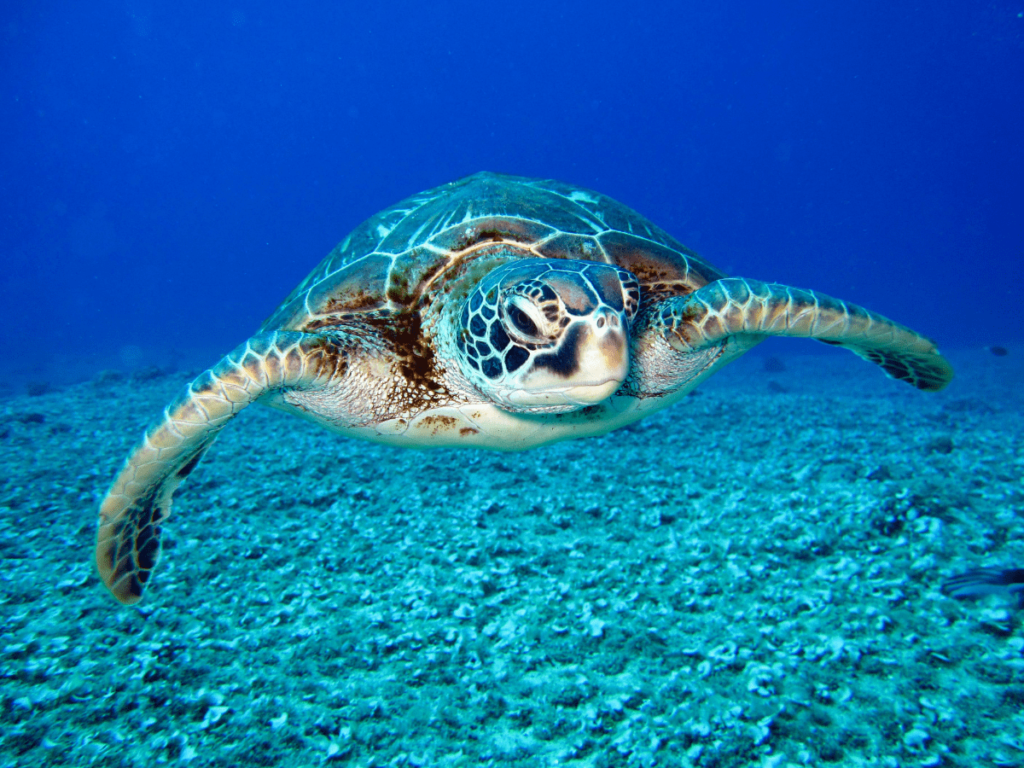
Terrapins: The Middle Ground
When exploring the difference between turtle and tortoise and terrapin, it’s essential to focus on how terrapins occupy a unique position in the spectrum of shelled reptiles. Unlike tortoises, which are strictly terrestrial, and turtles, which are primarily aquatic, terrapins are semi-aquatic. This distinction makes them fascinating creatures with specific adaptations that suit their dual environment.
| Common Name | Terrapin |
| Scientific Name | Testudines (Note: Testudines is the order, specific species vary) |
| Family Name | Various (e.g., Emydidae for many semi-aquatic terrapins) |
| Type | Reptile |
| Size | Head and body length: 20-30 cm (8-12 inches); Tail length: 1-4 cm (0.4-1.6 inches) |
| Weight | 0.5-2 kg (1-4.4 lbs), depending on species |
| Size Relative to a 6-Ft Human | Generally smaller, ranging from about 0.5 to 1.5 feet |
| Diet | Omnivorous; feeds on aquatic plants, small fish, insects, and crustaceans |
| Average Lifespan in the Wild | 10-20 years, depending on species |
| Habitat | Freshwater and brackish water environments such as estuaries, lagoons, and river mouths |
| Group Name | A group of terrapins is simply called a “bale” |
| Found In | Coastal regions of North America, parts of Europe, and some regions of Asia |
| Conservation Status | Ranges from Least Concern to Endangered, depending on species |
Semi-Aquatic Lifestyle
Terrapins are unique in that they thrive in both freshwater and brackish water environments. Brackish water is a mix of fresh and saltwater, often found in coastal lagoons, estuaries, and river mouths. This semi-aquatic lifestyle means that terrapins are adapted to handle a range of water salinities, allowing them to live in areas where freshwater and saltwater meet.

Unique Features
One of the key characteristics of terrapins is their versatile shell and limb structure. Their shells are somewhat intermediate between the flattened, streamlined shells of turtles and the domed, robust shells of tortoises. This intermediate shell shape allows for effective swimming while still providing some protection on land. Their feet are also adapted for a combination of swimming and walking, with webbing that facilitates movement in water and sturdy enough to handle terrestrial environments.
Terrapins also exhibit a range of dietary preferences based on their habitat. They are generally omnivorous, feeding on a mix of aquatic plants, small fish, insects, and crustaceans. This varied diet supports their survival in the diverse environments they inhabit.
Behavior and Habitat
Terrapins are often found in habitats where they can alternate between water and land. They use terrestrial areas for basking, nesting, and sometimes foraging, while their aquatic habitats provide opportunities for swimming, hunting, and cooling off. Their ability to thrive in both environments makes them highly adaptable and resilient.
Understanding the difference between turtle and tortoise and terrapin highlights the specialized nature of terrapins. Their semi-aquatic lifestyle and unique adaptations allow them to occupy a niche that bridges the gap between fully terrestrial tortoises and fully aquatic turtles.
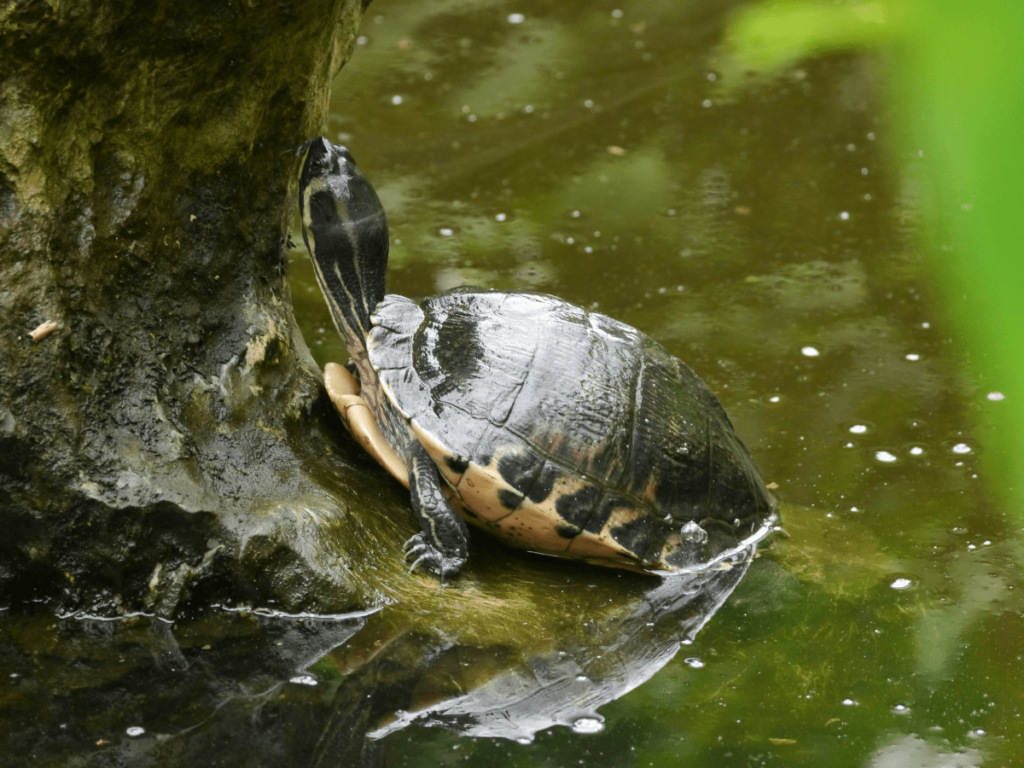
The Evolutionary Journey of Turtles, Tortoises, and Terrapins
When examining the turtle and tortoise difference, it’s insightful to explore the evolutionary paths that shaped their unique adaptations.
Evolutionary Paths
- Turtles: Turtles have evolved to become highly specialized for aquatic life. Their streamlined shells and webbed feet or flippers are adaptations that enhance their swimming capabilities. The transition from land to water involved significant changes, including a more flattened shell and a body structure optimized for buoyancy and propulsion in water. This evolution has allowed turtles to occupy a wide range of aquatic environments, from oceans to freshwater lakes.
- Tortoises: Tortoises represent a different evolutionary path, one that has adapted them to terrestrial life. Their high, domed shells and robust limbs are evolutionary responses to life on land. This shell shape provides protection against predators and harsh environmental conditions. Tortoises have also evolved to have sturdy legs capable of supporting their weight on solid ground, as well as adaptations for foraging and burrowing in dry environments.
Do you know The Tortoise can live over 177 years? Here are Top 10 Longest Living Animals
- Terrapins: Terrapins have evolved to occupy a niche that bridges the gap between aquatic and terrestrial environments. Their evolutionary adaptations include an intermediate shell shape that offers some protection while still being conducive to swimming. Their limbs are adapted for both walking and swimming, allowing them to thrive in semi-aquatic habitats like estuaries and brackish waters.
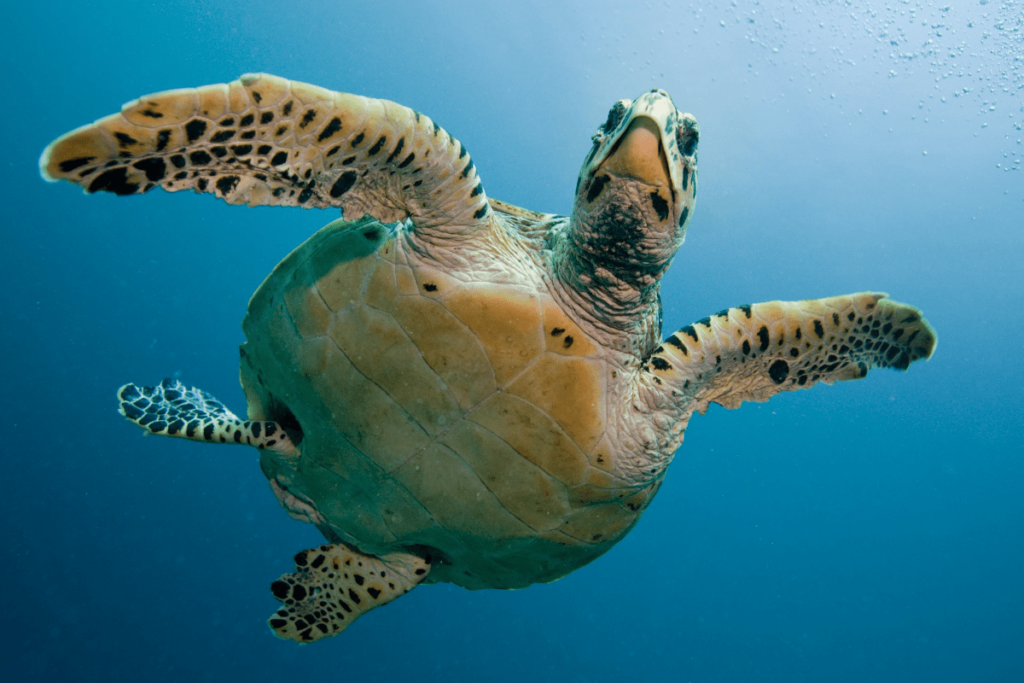
Understanding these evolutionary adaptations provides insight into how these reptiles have diversified to occupy their respective niches. Each has developed unique features that suit their specific environments and lifestyles.
Tortoise Vs Turtle: Which One Makes a Better Pet?
When choosing between turtle and tortoise as a pet, it’s important to consider their distinct needs and care requirements:
Turtles as Pets
- Habitat Needs: Turtles require a suitable aquatic or semi-aquatic setup, including a well-maintained tank with clean water, a basking area, and proper filtration.
- Diet: Turtles often need a varied diet that can include aquatic plants, commercial turtle food, and occasional protein sources such as insects or fish.
- Care Considerations: Turtles can be more demanding in terms of habitat maintenance and may require regular veterinary check-ups. They also need a proper UVB light source to support their health.

Tortoises as Pets
- Habitat Needs: Tortoises need a terrestrial enclosure with ample space for roaming, access to sunlight or UVB lighting, and a habitat that mimics their natural environment with soil and vegetation.
- Diet: Tortoises are primarily herbivorous and require a diet rich in leafy greens, vegetables, and occasionally fruits.
- Care Considerations: Tortoises generally have simpler habitat requirements compared to turtles but need a well-maintained, spacious area to live in. They also benefit from regular health checks to monitor their overall well-being.
Conclusion
In exploring the differences between turtle vs tortoise vs terrapin, we’ve uncovered a fascinating tapestry of evolutionary adaptations and unique traits that set each group apart. From their distinct habitats and physical characteristics to their varied behaviors and dietary needs, these reptiles illustrate the incredible diversity of life on our planet.
Turtles, with their streamlined shells and aquatic adaptations, navigate a world of water with ease. They remind us of the delicate balance required to thrive in marine and freshwater environments. Tortoises, on the other hand, embody the resilience and adaptability needed for life on land. Their sturdy shells and robust limbs are a testament to their evolutionary journey through arid and grassy landscapes. Terrapins occupy a special niche, bridging the gap between land and water, showcasing a remarkable blend of features suited for semi-aquatic living.

Understanding these distinctions not only enhances our appreciation for these remarkable creatures but also informs our choices when considering them as pets. Each species requires a unique set of care and habitat conditions to ensure their well-being.
As we conclude this exploration, we invite you to reflect on the unique qualities of these reptiles. Which do you find most intriguing?
Have you encountered any of these fascinating animals in their natural habitats? Which of these fascinating reptiles—turtles, tortoises, or terrapins—captivates you the most?
Share your thoughts and experiences in the comments below.
